Idea how to start multiple SpringBoot projects
1. Preparation
Use Idea to build a hello world Spring Boot project.
Development environment description:
(1) Spring Boot 2.7.0
(2) Idea: IntelliJ IDEA 2022.2.2
(3) OS : Mac OS
The environment is different, some operations are slightly different, but the overall idea is the same.
2. Start multiple SpringBoot
2.1 Solution 1: Modify the port of the configuration file
In the Spring Boot project, the port number can be configured in the configuration file, so the final The simple solution that can be thought of is to modify the port configuration server.port in the configuration file application.(properties/yml). The specific operations are:
(1) First configure server.port = 8080, and run the startup class to start the application.
(2) Modify server.port = 8081 and run the startup class to start the application.
This will start two Spring Boot applications with different ports. Although this method is simple, its operation experience is not friendly, and modifying the configuration file in an actual project will definitely not work.
2.2 Solution 2: Edit Configurations of Idea tool
Use the Edit Configurations provided by Idea to configure application parameters.

Click Modify Options to add application parameters:
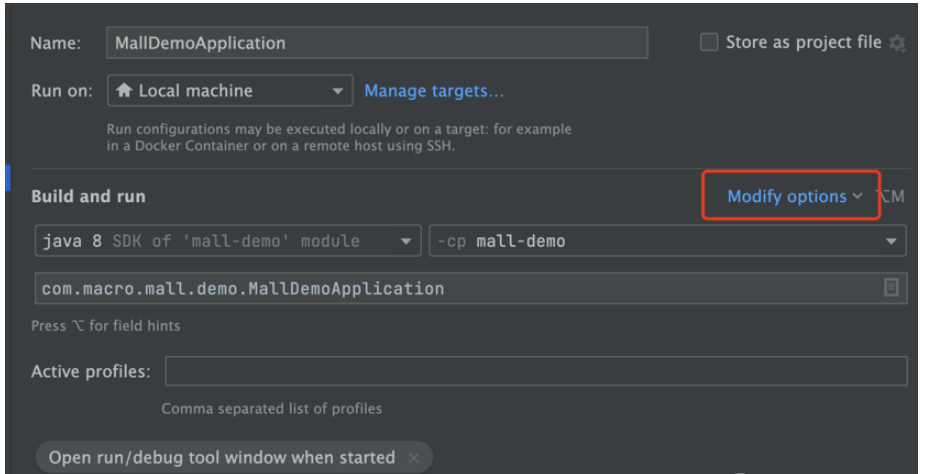
The interface may be slightly different depending on the version of the development tool. , but you can all find Program arguments:

Description:
(1) VM options: VM options is actually the runtime environment we need in the program Variable, it needs to start with -D or -X or -XX, each parameter is separated by a space eg: -Dspring.profiles.active=dev
(2) Program arguments: Program arguments are passed into main for us String array args[] of the method, which usually starts with --, such as --spring.profiles.active=dev; which is equivalent to -Dspring.profiles.active=dev. If both exist, the Program arguments configuration takes precedence.
Then add a --server.port=8081 configuration:
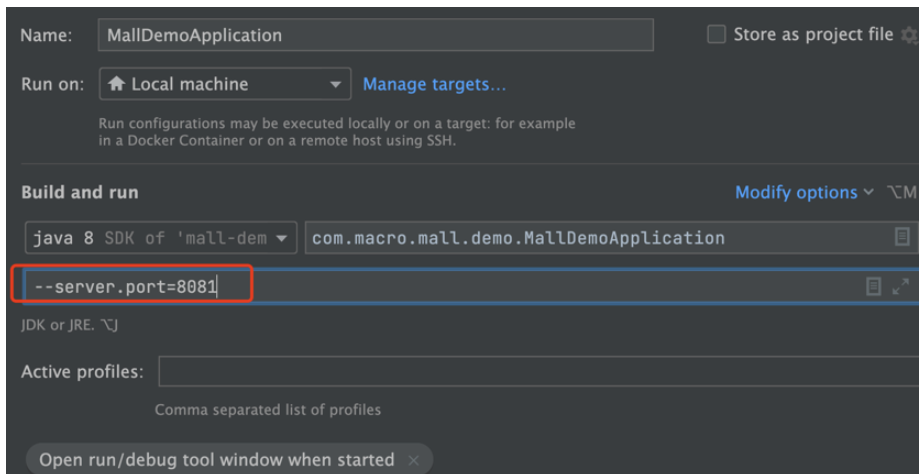
2.3 Solution 3: Use RunDashboard
IDEA provides powerful Dashboard functionality (Run Dashboard) can manage the above multi-application startup instances very well, visualize the projects we configure, facilitate the reconfiguration, Run, and Debug of the spring boot project, and simplify our operation steps.
Add the following configuration in the .idea/workspace.xml file:
<component name="RunDashboard">
<option name="configurationTypes">
<set>
<option value="SpringBootApplicationConfigurationType" />
</set>
</option>
</component>After starting again, you can see the Run Dashboard at the bottom
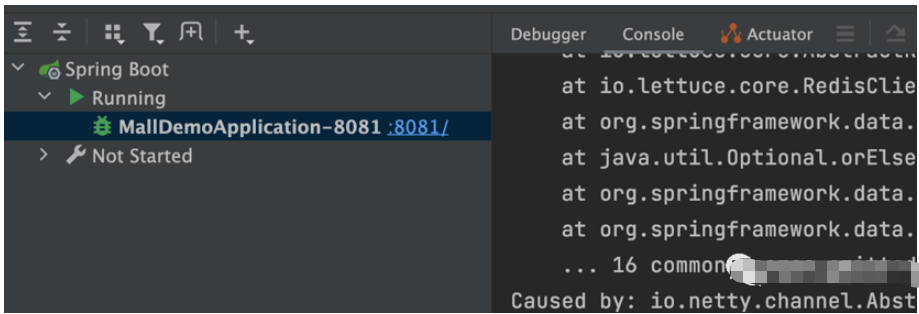
You can copy a configuration here:
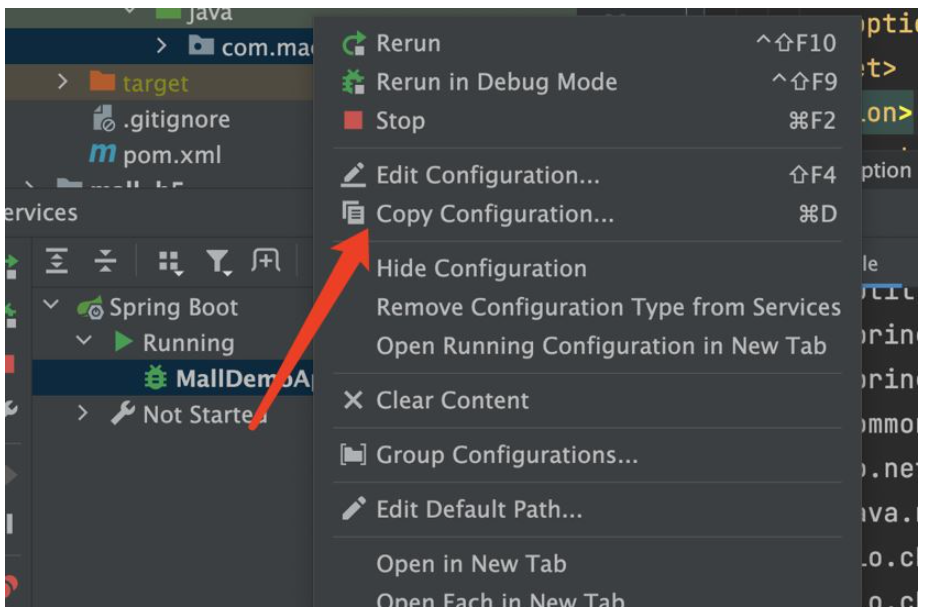
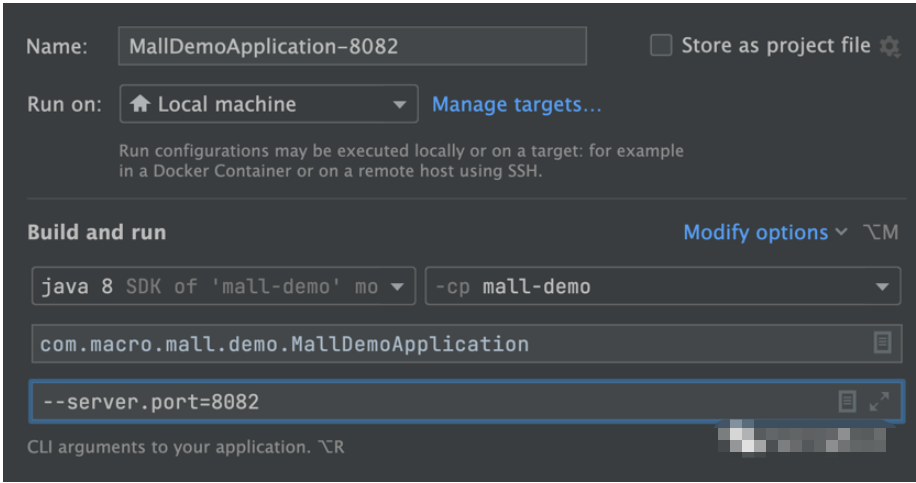
In this way, you can start multiple ones:

3. Two Spring Boot startups on the same port
SpringBoot comes with Tomcat, just run SpringApplication.run in the main method directly, and it is not required for access With project name.
If there are two SpringBoot projects in the idea and the access paths of the controller layer are the same, and since there is no path name, two main methods cannot be run at the same time. If two main methods are run at the same time, the port number must be occupied. How to start two projects at the same time.
You only need to deploy the war package to the Tomcat server, and there is no need to use SpringBoot's built-in Tomcat server. To access, just enter localhost:8080/project name/path in the URL. In the development tools, you can also use external Tomcat to start.
The above is the detailed content of Idea how to start multiple SpringBoot projects. For more information, please follow other related articles on the PHP Chinese website!

Hot AI Tools

Undresser.AI Undress
AI-powered app for creating realistic nude photos

AI Clothes Remover
Online AI tool for removing clothes from photos.

Undress AI Tool
Undress images for free

Clothoff.io
AI clothes remover

AI Hentai Generator
Generate AI Hentai for free.

Hot Article

Hot Tools

Notepad++7.3.1
Easy-to-use and free code editor

SublimeText3 Chinese version
Chinese version, very easy to use

Zend Studio 13.0.1
Powerful PHP integrated development environment

Dreamweaver CS6
Visual web development tools

SublimeText3 Mac version
God-level code editing software (SublimeText3)

Hot Topics
 The difference between idea community version and professional version
Nov 07, 2023 pm 05:23 PM
The difference between idea community version and professional version
Nov 07, 2023 pm 05:23 PM
The differences between IDEA Community Edition and Professional Edition include authorization methods, functions, support and updates, plug-in support, cloud services and team collaboration, mobile development support, education and learning, integration and scalability, error handling and debugging, security and privacy protection. etc. Detailed introduction: 1. Authorization method. The community version is free and suitable for all developers, no matter what operating system is used. The community version supports open source projects and commercial projects. The professional version is paid and suitable for commercial development. The professional version has 30 There is a trial period of three days, after which you need to purchase a license to continue using it, etc.
 How to use Redis to implement distributed locks in SpringBoot
Jun 03, 2023 am 08:16 AM
How to use Redis to implement distributed locks in SpringBoot
Jun 03, 2023 am 08:16 AM
1. Redis implements distributed lock principle and why distributed locks are needed. Before talking about distributed locks, it is necessary to explain why distributed locks are needed. The opposite of distributed locks is stand-alone locks. When we write multi-threaded programs, we avoid data problems caused by operating a shared variable at the same time. We usually use a lock to mutually exclude the shared variables to ensure the correctness of the shared variables. Its scope of use is in the same process. If there are multiple processes that need to operate a shared resource at the same time, how can they be mutually exclusive? Today's business applications are usually microservice architecture, which also means that one application will deploy multiple processes. If multiple processes need to modify the same row of records in MySQL, in order to avoid dirty data caused by out-of-order operations, distribution needs to be introduced at this time. The style is locked. Want to achieve points
 How to solve the problem that springboot cannot access the file after reading it into a jar package
Jun 03, 2023 pm 04:38 PM
How to solve the problem that springboot cannot access the file after reading it into a jar package
Jun 03, 2023 pm 04:38 PM
Springboot reads the file, but cannot access the latest development after packaging it into a jar package. There is a situation where springboot cannot read the file after packaging it into a jar package. The reason is that after packaging, the virtual path of the file is invalid and can only be accessed through the stream. Read. The file is under resources publicvoidtest(){Listnames=newArrayList();InputStreamReaderread=null;try{ClassPathResourceresource=newClassPathResource("name.txt");Input
 Comparison and difference analysis between SpringBoot and SpringMVC
Dec 29, 2023 am 11:02 AM
Comparison and difference analysis between SpringBoot and SpringMVC
Dec 29, 2023 am 11:02 AM
SpringBoot and SpringMVC are both commonly used frameworks in Java development, but there are some obvious differences between them. This article will explore the features and uses of these two frameworks and compare their differences. First, let's learn about SpringBoot. SpringBoot was developed by the Pivotal team to simplify the creation and deployment of applications based on the Spring framework. It provides a fast, lightweight way to build stand-alone, executable
 Five IntelliJ IDEA plug-ins to write code efficiently
Jul 16, 2023 am 08:03 AM
Five IntelliJ IDEA plug-ins to write code efficiently
Jul 16, 2023 am 08:03 AM
Artificial intelligence AI is currently a widely recognized future trend and development direction. Although some people worry that AI may replace all jobs, in fact it will only replace jobs that are highly repetitive and low-output. Therefore, we should learn to work smarter rather than harder. This article introduces 5 AI-driven Intellij plug-ins. These plug-ins can help you improve productivity, reduce tedious repetitive work, and make your work more efficient and convenient. 1GithubCopilotGithubCopilot is an artificial intelligence code assistance tool jointly developed by OpenAI and GitHub. It uses OpenAI’s GPT model to analyze code context, predict and generate new code
 How SpringBoot customizes Redis to implement cache serialization
Jun 03, 2023 am 11:32 AM
How SpringBoot customizes Redis to implement cache serialization
Jun 03, 2023 am 11:32 AM
1. Customize RedisTemplate1.1, RedisAPI default serialization mechanism. The API-based Redis cache implementation uses the RedisTemplate template for data caching operations. Here, open the RedisTemplate class and view the source code information of the class. publicclassRedisTemplateextendsRedisAccessorimplementsRedisOperations, BeanClassLoaderAware{//Declare key, Various serialization methods of value, the initial value is empty @NullableprivateRedisSe
 How to get the value in application.yml in springboot
Jun 03, 2023 pm 06:43 PM
How to get the value in application.yml in springboot
Jun 03, 2023 pm 06:43 PM
In projects, some configuration information is often needed. This information may have different configurations in the test environment and the production environment, and may need to be modified later based on actual business conditions. We cannot hard-code these configurations in the code. It is best to write them in the configuration file. For example, you can write this information in the application.yml file. So, how to get or use this address in the code? There are 2 methods. Method 1: We can get the value corresponding to the key in the configuration file (application.yml) through the ${key} annotated with @Value. This method is suitable for situations where there are relatively few microservices. Method 2: In actual projects, When business is complicated, logic
 SpringBoot+Dubbo+Nacos development practical tutorial
Aug 15, 2023 pm 04:49 PM
SpringBoot+Dubbo+Nacos development practical tutorial
Aug 15, 2023 pm 04:49 PM
This article will write a detailed example to talk about the actual development of dubbo+nacos+Spring Boot. This article will not cover too much theoretical knowledge, but will write the simplest example to illustrate how dubbo can be integrated with nacos to quickly build a development environment.






